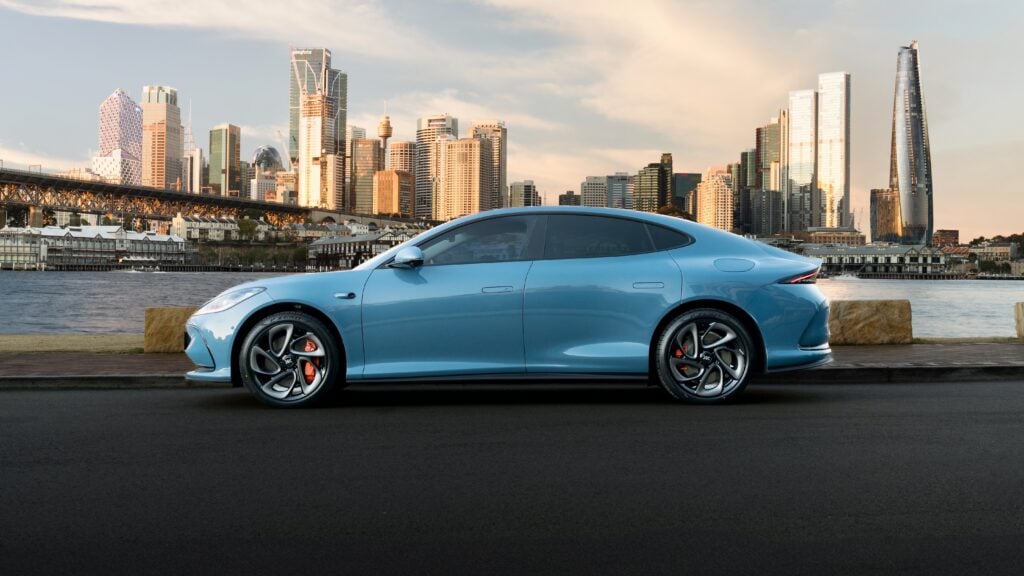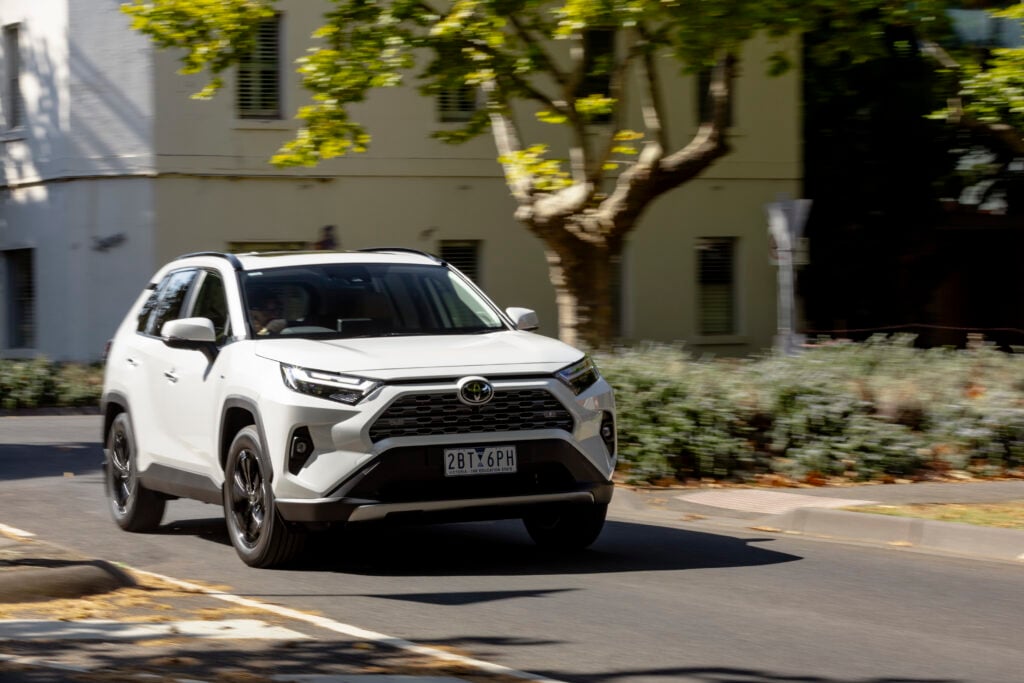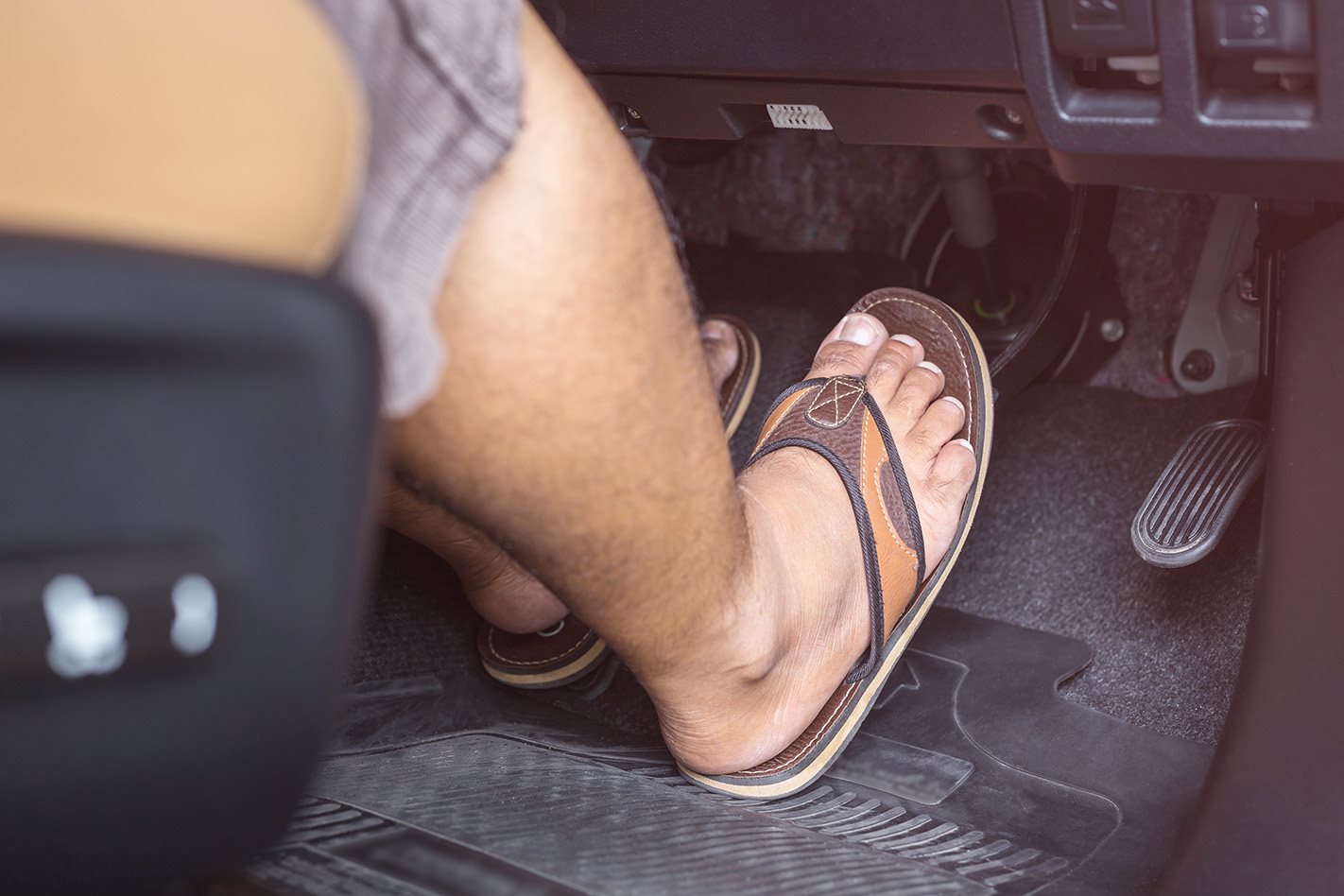
The best shoe for any task is a fairly subjective topic. Any piece of footwear that successfully separates your feet from ground will get the job done, so typically the main determining factors are: what’s most appropriate for your job, what’s most comfortable, or what you think looks best.
When it comes to driving, the requirements are a little different. And pragmatism rules. Cute heels, comfy thongs, fluffy slippers or steel-toe boots might not be as appropriate as you think.
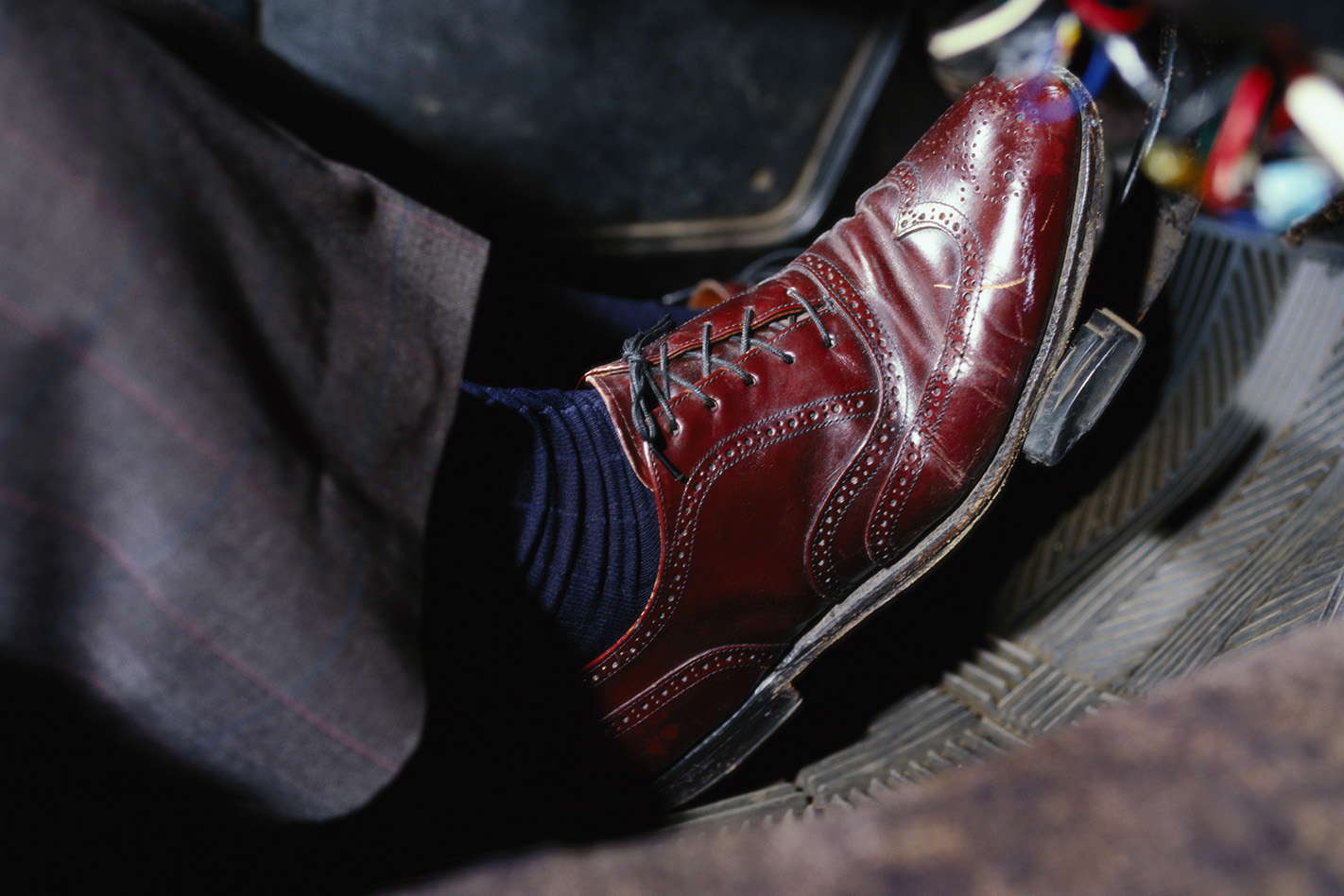
Three pillars of a great driving shoe
There are three things that you want to ensure regarding the footwear you use while driving.
Firstly, they must not get in the way of your ability to operate the car.
Secondly, they need to give your feet good support (especially if you spend long stints behind the wheel).
Finally, they should protect your feet from injury.
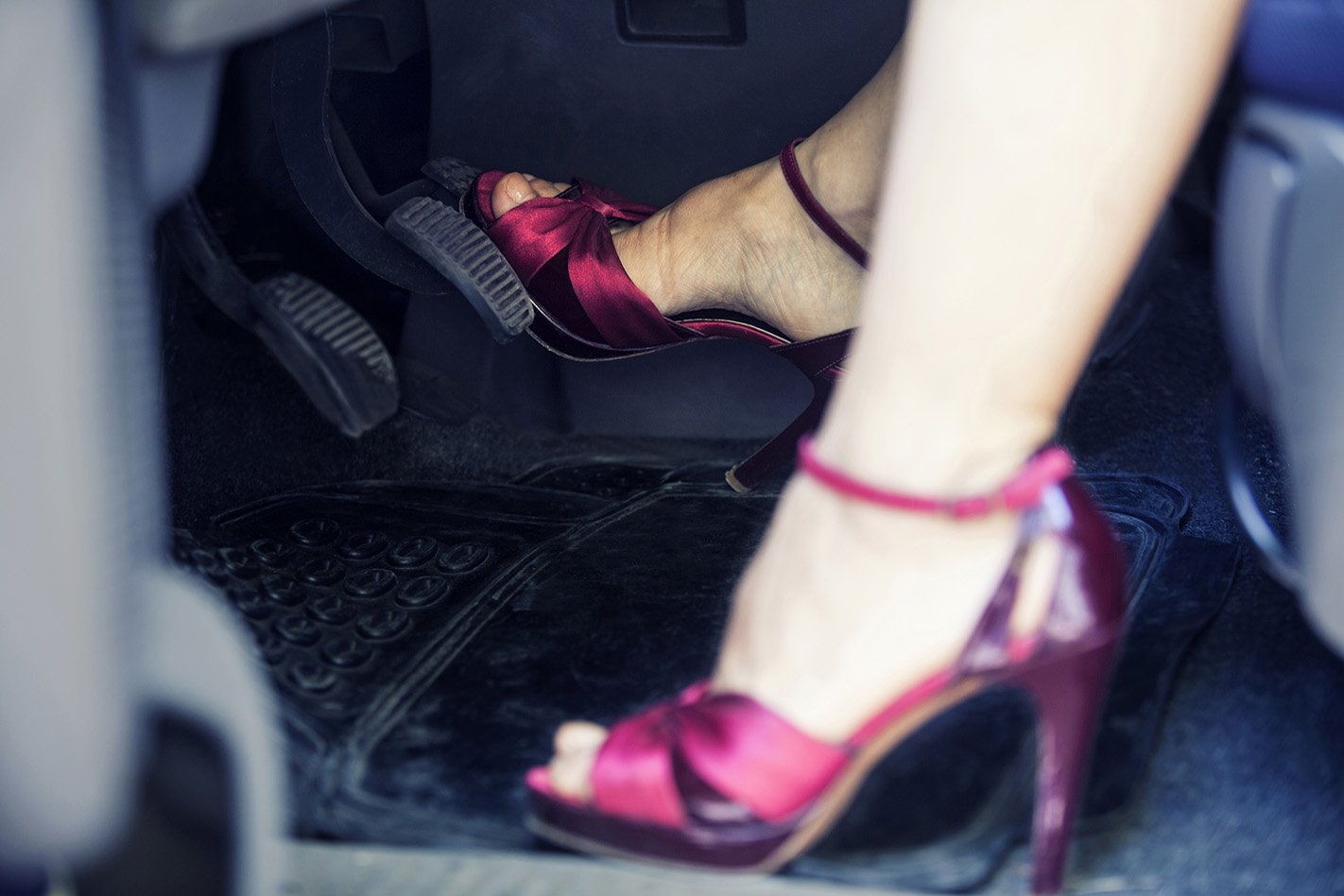
Functionality is king
The first criteria is fundamental. The most important thing is to ensure that your foot is able to articulate fully while your heels stay on the floor – meaning you can point your toes down as easily as you can point them up, as well as pivot them left or right.
Preserving that range of motion means that your right foot can quickly and easily switch from accelerator to brake, and also apply maximum pressure to the brake pedal in an emergency.
It’s why very high heels are often not recommended for driving, as they put the foot in a toes-down position by default, while your actual heel is kept far away from the pivot point formed by the shoe’s heel and the car’s floor. It changes the geometry of your joints in a way that isn’t conducive to safe driving.
Chunky shoes are another bad idea. While many might think stilettos are the worst choice for a driver, gumboots are even worse – not only are they big, clunky and liable to press two pedals at once (or get stuck behind a pedal) they offer basically no heel articulation at all. The only thing less suitable would probably be a ski boot.
Thick-soled, steel-toed workboots aren’t as bad, but their bulk can get in the way if pedals aren’t spaced far apart, or the driver’s footwell is cramped. If you wear any of the above for work reasons, maybe consider leaving a pair of sneakers in your car.
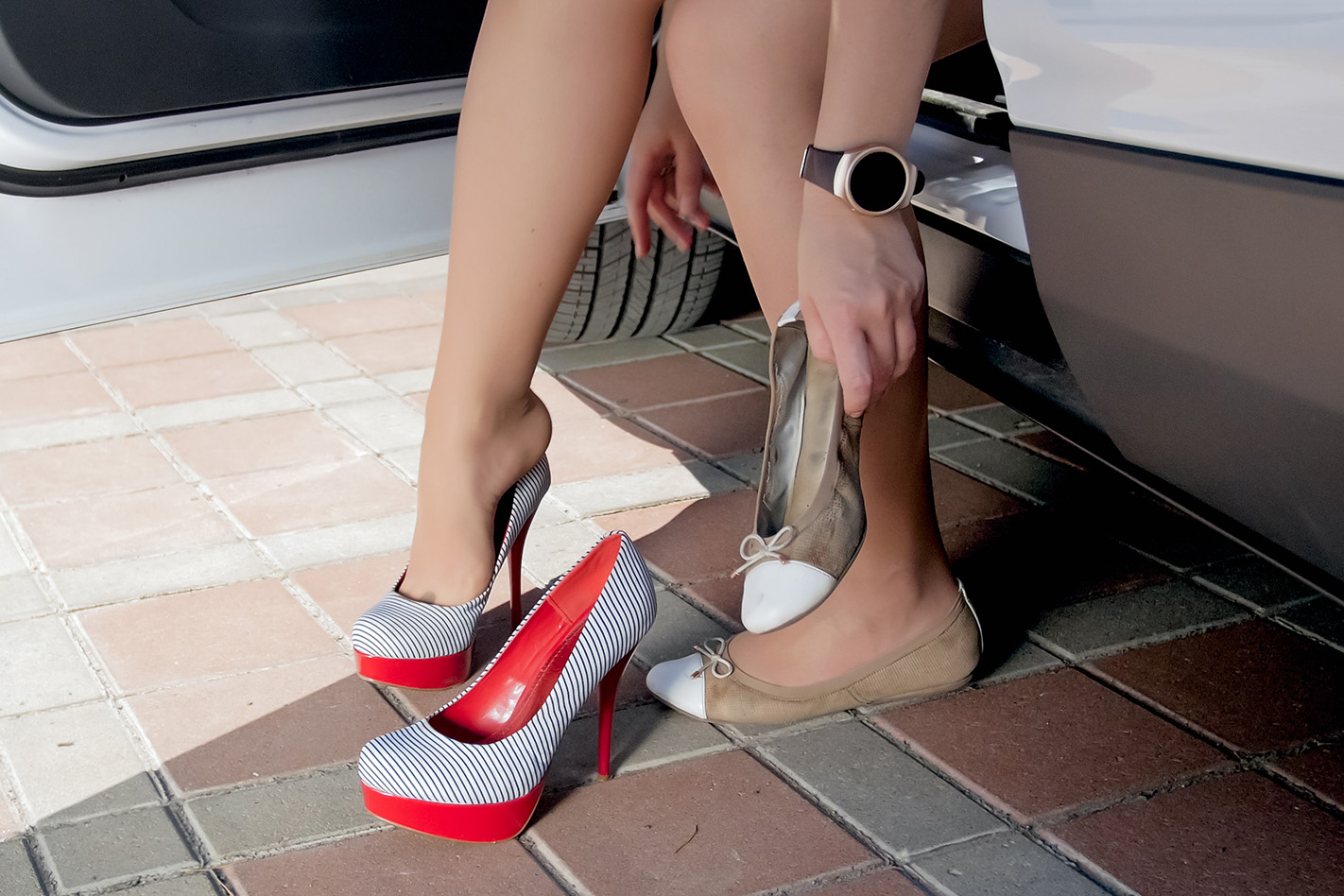
Comfort is crucial
If you’re a regular driver or do plenty of miles behind the wheel for work or recreation (like we do), supportive shoes are critical. Footwear that’s comfortable to walk or run it doesn’t necessarily make good driving shoes, mainly because heel support may be lacking.
Given you’ll spend most of your time with only the rear part of your heels in contact with the car’s floor (and thus, supporting all of the weight of your foot and half of your legs), shoes that ‘cup’ the heel closely and have decent insole padding around that area are the best.
A sole that is rounded at the rear helps a lot too, allowing your foot to roll forward and back rather than teeter on the edge of the shoe’s sole.
Backless shoes – be they hotel slippers, thongs, sandals or Crocs (even in sports mode) – are terrible for this. They’ll want to fall off your feet straight away, and once you inevitably kick them off and resort to driving barefoot they then become an unsecured object in the footwell.
Brake pedals don’t work especially well when there’s a urethane sandal wedged behind them. Just saying.
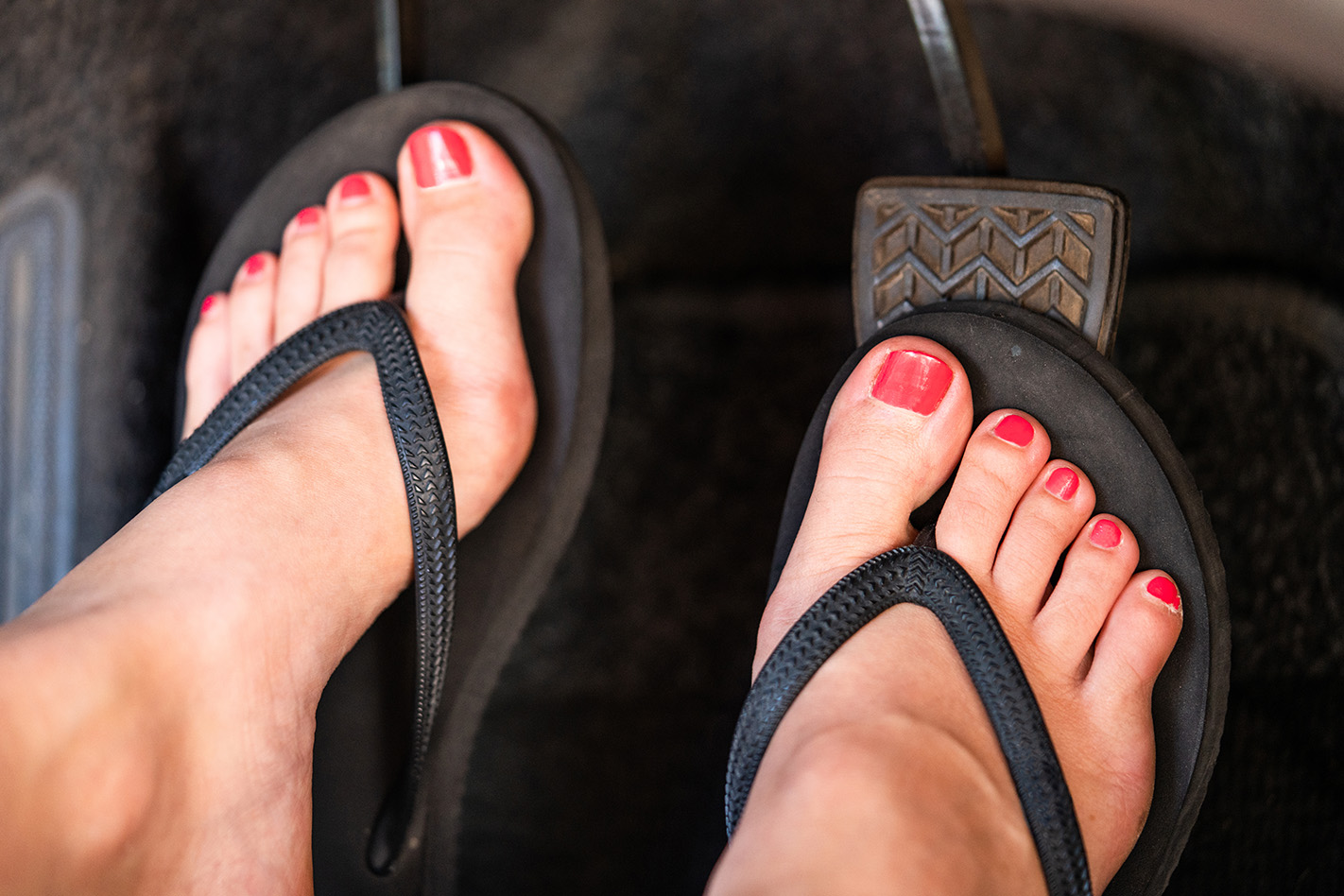
Safety is paramount
Contrary to popular belief, driving barefoot or in socks isn’t actually illegal in Australia – but it sure isn’t a great idea.
Not only is there nothing to spread the weight of your legs away from your heel, but there’s also the possibility that you can cut your foot on the sharp edges often found on the back and sides of a brake, clutch or accelerator pedal.
The same applies for open-toed shoes, thongs and strappy sandals.
Plus, if you’re in a reasonably big frontal collision, you also risk doing more damage to your feet by electing to drive barefoot. Many modern cars still struggle with protecting the feet and legs of front-seat occupants, especially the driver due to the added bulk of the pedal assembly.
Feet and legs often get trapped or pinched by parts of the car in an accident, and something that may only bruise your foot if you were wearing a shoe may cause a far more serious injury if you were without footwear.
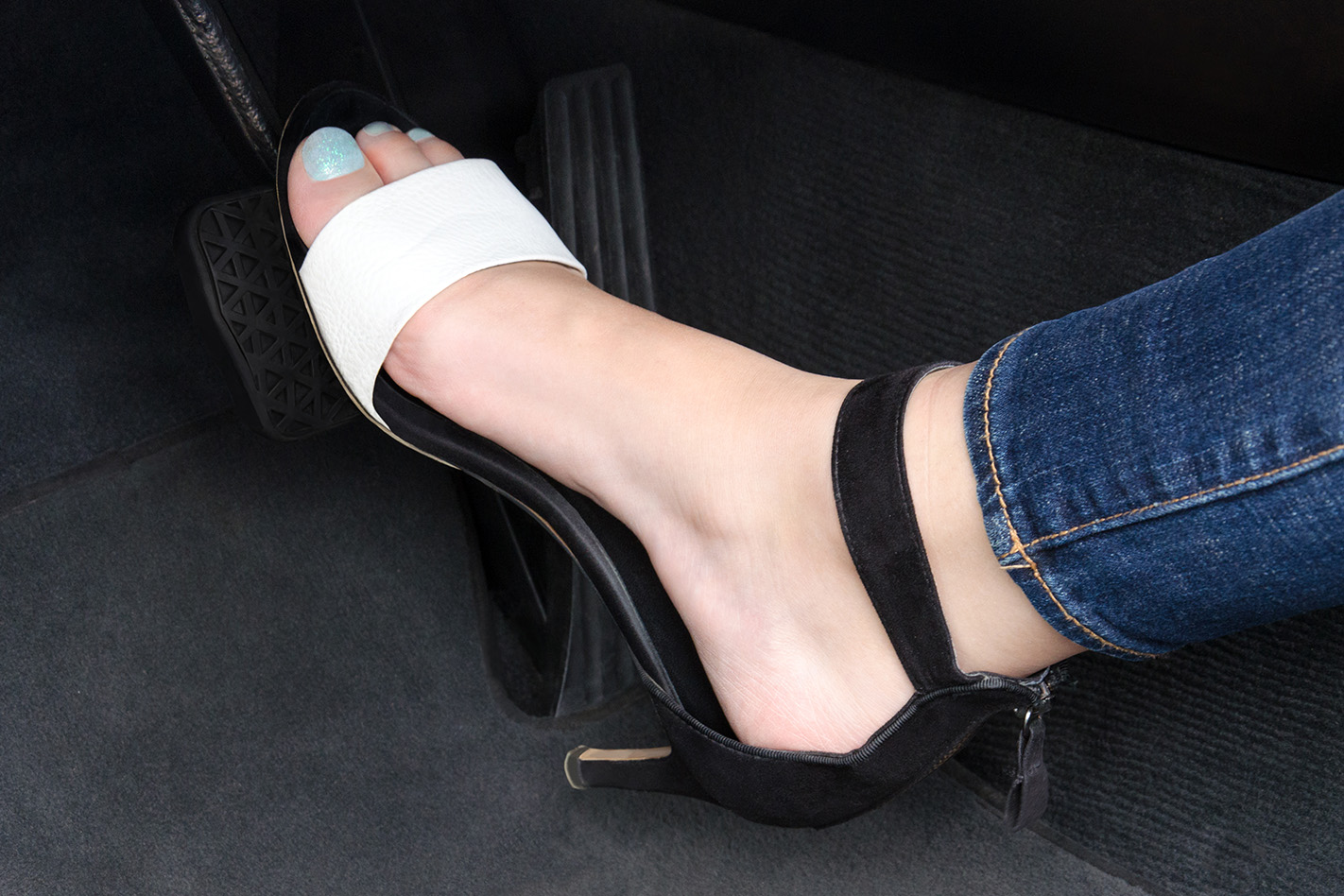
The best shoes for driving
Outside of proper purpose-made driving shoes (which, coincidentally, are rubbish for actually walking around in), there’s no one specific kind of normal shoe that’s perfectly suited to driving.
Some may swear that driving in heels works better for them, while others aren’t fussed by wearing chunky-soled shoes.
Sneakers, tennis shoes or sand shoes are generally considered the best option. A thin-soled shoes has the added benefit of giving you more feel, too.
But the most important thing is that the above criteria are covered: no restrictions on your foot’s natural range of movement; good support; and adequate protection all around your foot. If your shoes tick those boxes, they’re likely fine.

